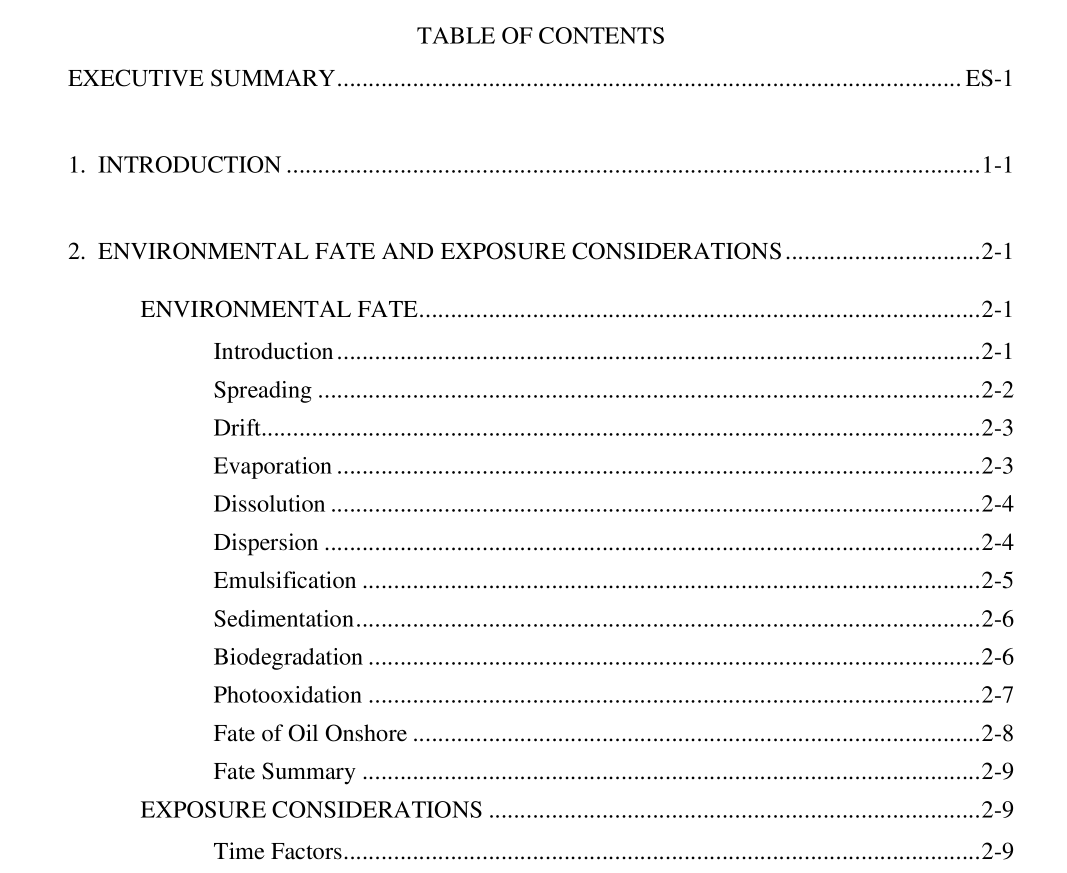API Publ 4689 pdf download

API Publ 4689 pdf download.Chemical Human Health Hazards Associated With Oil Spill Response
This report provides an overview of potential human health hazards encountered by personnel involved with petroleum product spills or leaks. Widely distributed products are covered, including crude oil, gasolines, various middle distillates (e.g., kerosene, jet fuel, diesel fuel, and home heating oil), heavy fuel oil, and asphalt. The main objective is to define basic components and products of concern based on their inherent toxicity and potential risks to oil spill workers. In addition, environmental factors that may affect the risk of exposure to the various components are discussed. A brief summary of important exposure considerations is included (Section 4). In order to discuss the potential human health hazards associated with these petroleum hydrocarbon products, it is helpful to break down the products into the various components of concern and understand the toxicology of those components. Table 2-1 links the various products to their associated components of concern. The main components of health concern in Table 2-1 include benzene, hydrogen sulfide, n-hexane, naphthalene, toluene, trimethyl benzene, polycyclic aromatic hydrocarbons (PAHs) and, in specific instances, organic lead compounds. Acute health hazards associated with many components of concern include depression of the central nervous system, and irritation to the skin, eyes, and respiratory tract. Chronic exposure to some components, such as benzene and polycyclic aromatic hydrocarbons, has been associated with cancer risks.Other than the toxicological properties of the components and products of concern, other factors affect the nature of health hazards during spill response activities. These include environmental conditions, the physical characteristics of the products, and the type of spill or leak scenario and time factors. The environmental fate of a spilled material is determined by various mechanisms including evaporation, spreading, dissolution, drift, dispersion, and emulsification.
An oil slick contains areas of variable thickness. Under relatively calm conditions, oil slicks typically may have a thick (2 1 mm) area surrounded by a more extensive thin(< 10 um) area. The thick portion contains the greatest volume of oil (approximately 90%) while the thin portion of the slick contains the balance. The thin area, however, represents 80% to 90% of the total slick area. Local physical factors make predictions of spreading difficult. Wave and wind action modify oil spreading. Natural surface convergences (areas where currents meet) or divergences (areas where adjacent currents move in different directions) may cause accumulations or separations of oil. As a result, windrows (streaks) and oil patches may occur. Spreading is an important determinant for rates of dissolution, dispersion, and photooxidation of oil. Drift The combined action of wind, surface currents, and waves causes the oil slick to drift. Prediction of slick drift is necessary for spill response planning and operations. Slick drift is largely independent of spill volume, spreading, or weathering. However, a “thick” slick drifts faster than a “thin” slick, because wind interaction is increased with thicker oil in comparison to thinner oil. Therefore, the thicker portions of the slick often form the leading edge of an advancing spill. Local conditions such as river outflow, nearshore structures, or the presence of surface debris can also affect slick drift. As low molecular weight components evaporate, the physical properties of the remaining oil change. For example, specific gravity and viscosity of the oil will increase. These changes will tend to retard the rate of spreading and evaporation. Dissolution Dissolution is the transfer of soluble hydrocarbons from a slick or dispersed oil into solution in water. Dissolution begins immediately after a spill. The concentration of soluble components in crude oil is low, about 10 to 30 ppm. Low molecular weight components tend to be more soluble than higher molecular weight components. The more polar aromatic components (benzene, toluene, xylenes) tend to be more soluble than alkanes (up to C5). In addition, some of the sulfur-containing components and salts present in crude oil are water soluble. Since only a very small fraction of an oil slick dissolves, it is unlikely that dissolution significantly affects oil weathering. Although evaporation occurs more rapidly than dissolution, dissolution is an important process under conditions when evaporation is minimal. For example, evaporation is not likely to occur when oil droplets are dispersed or when oil is trapped under or in ice.









